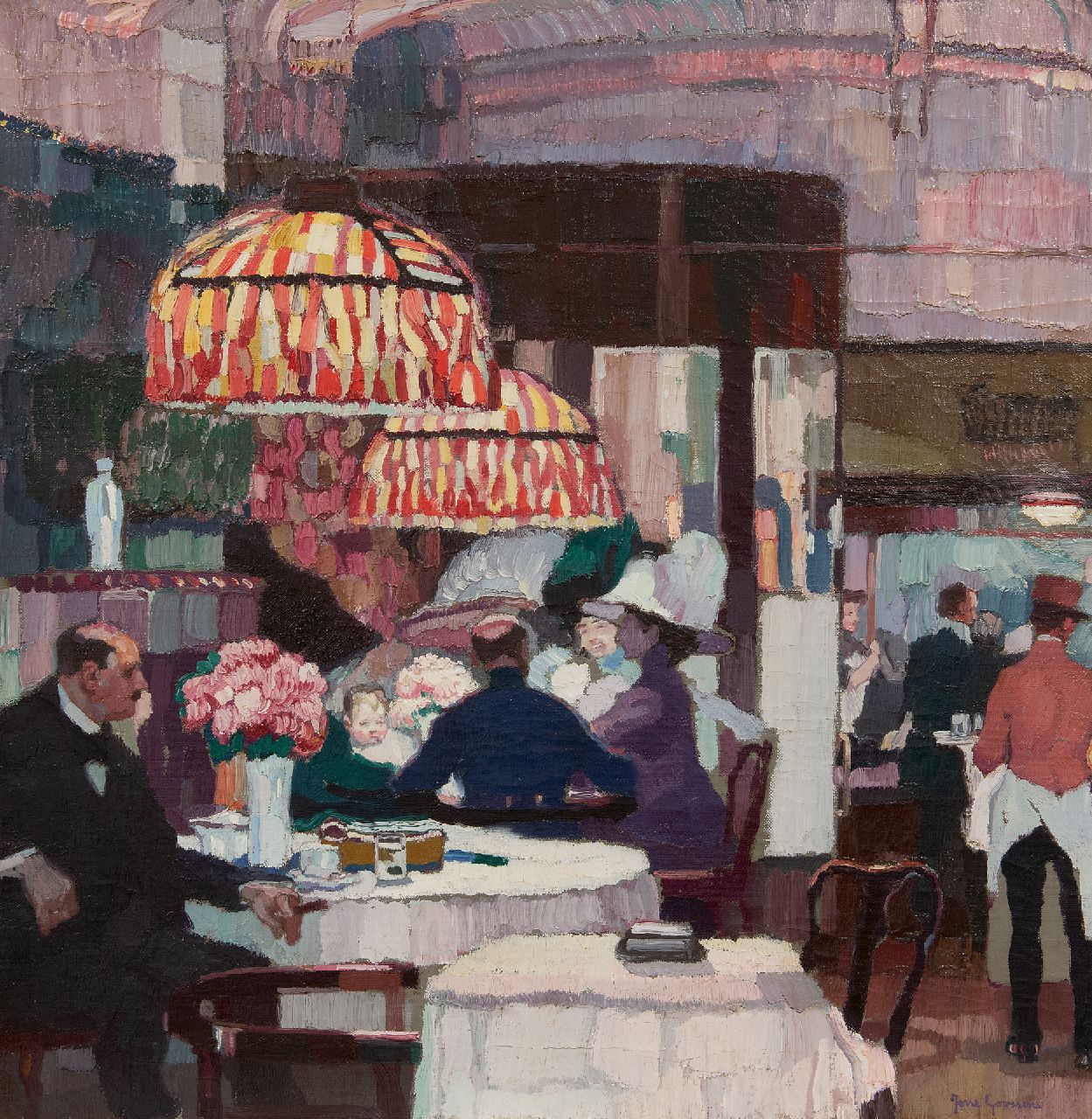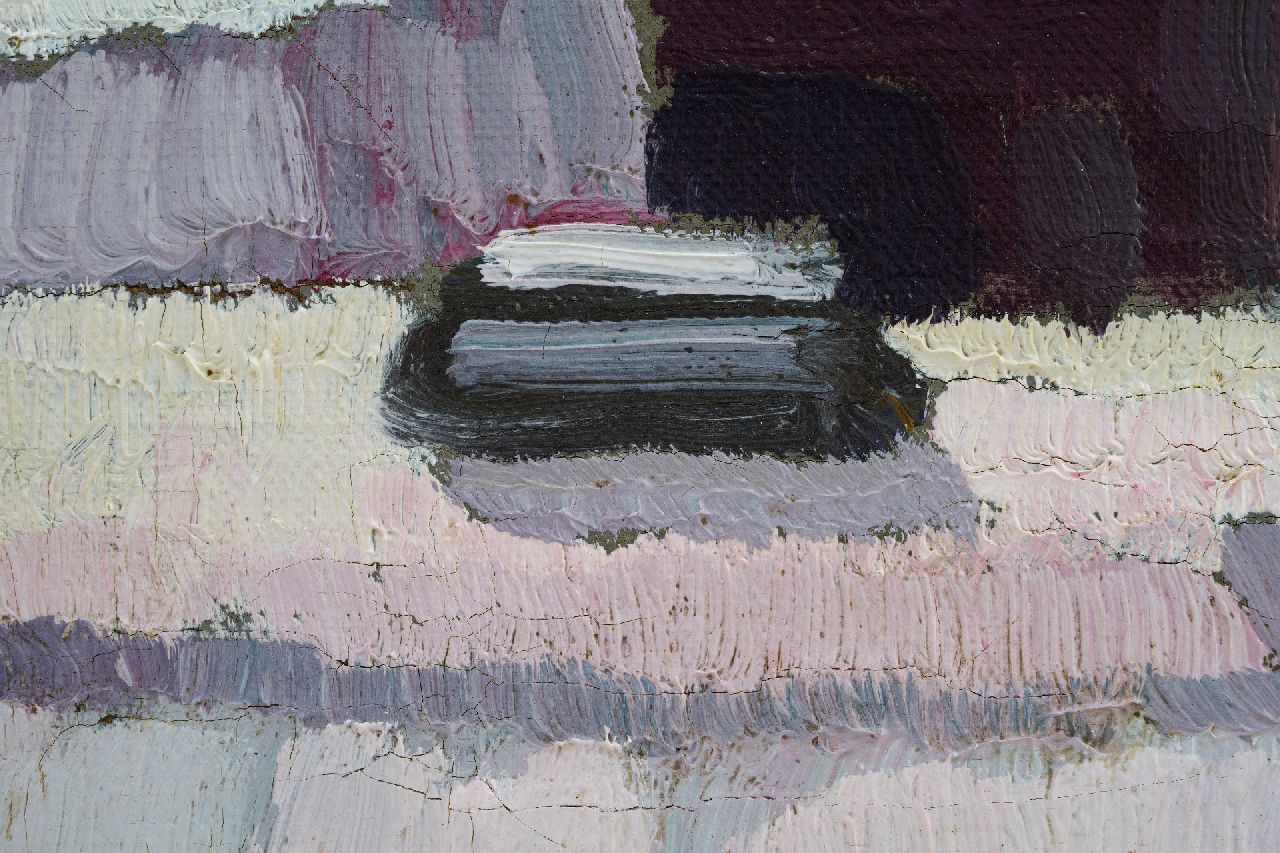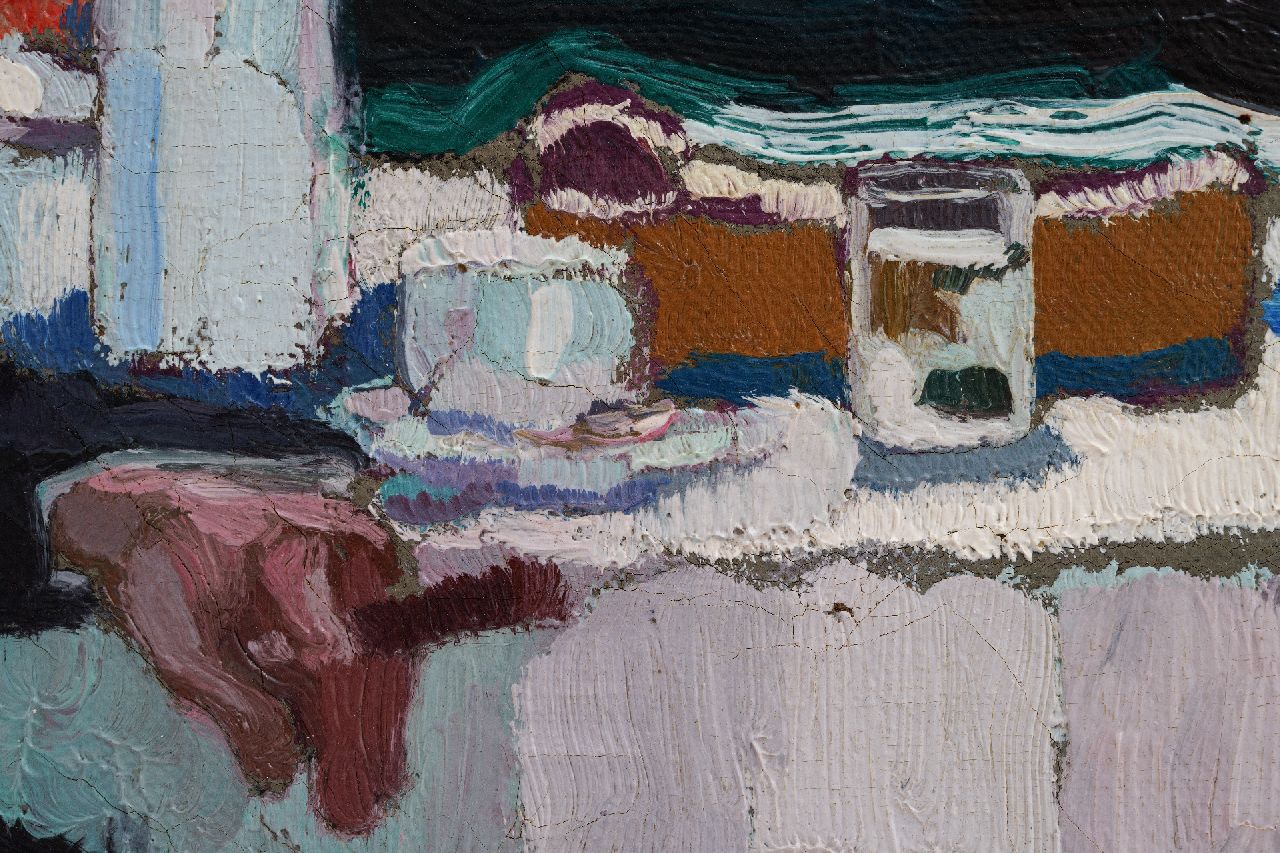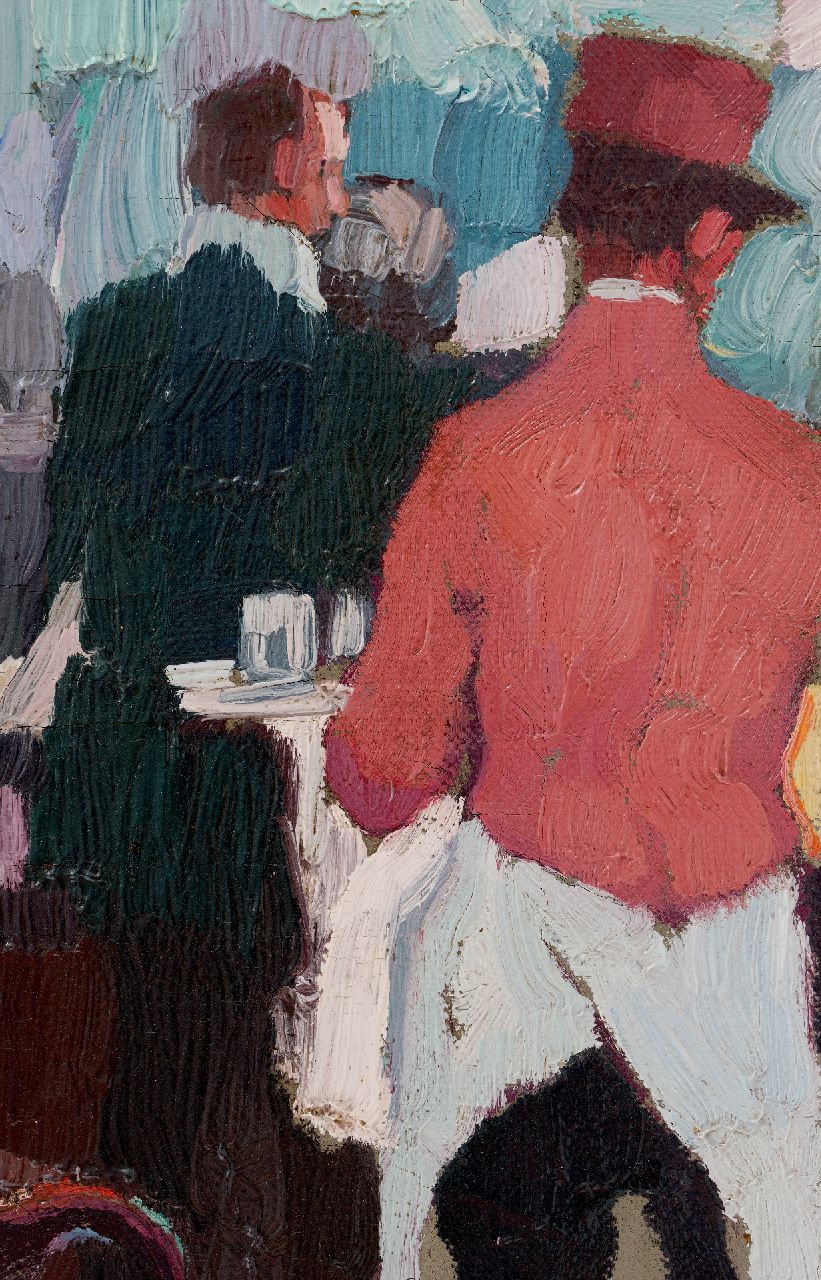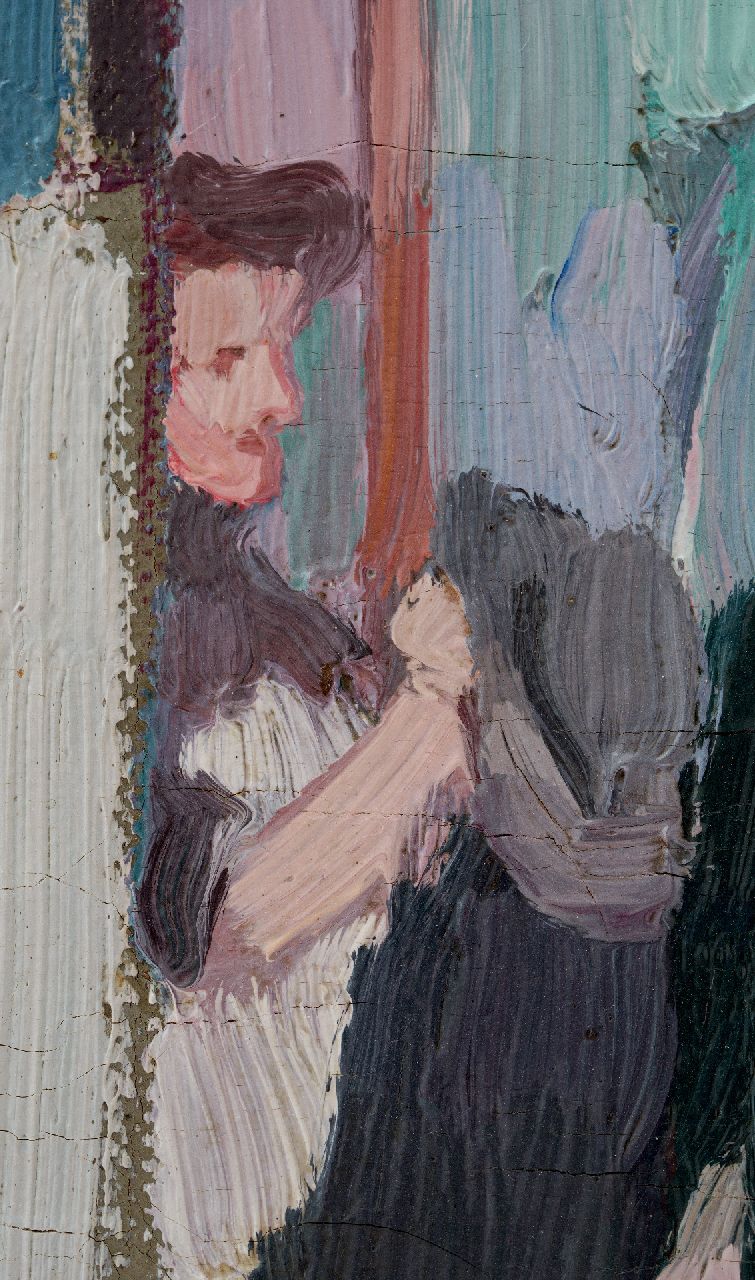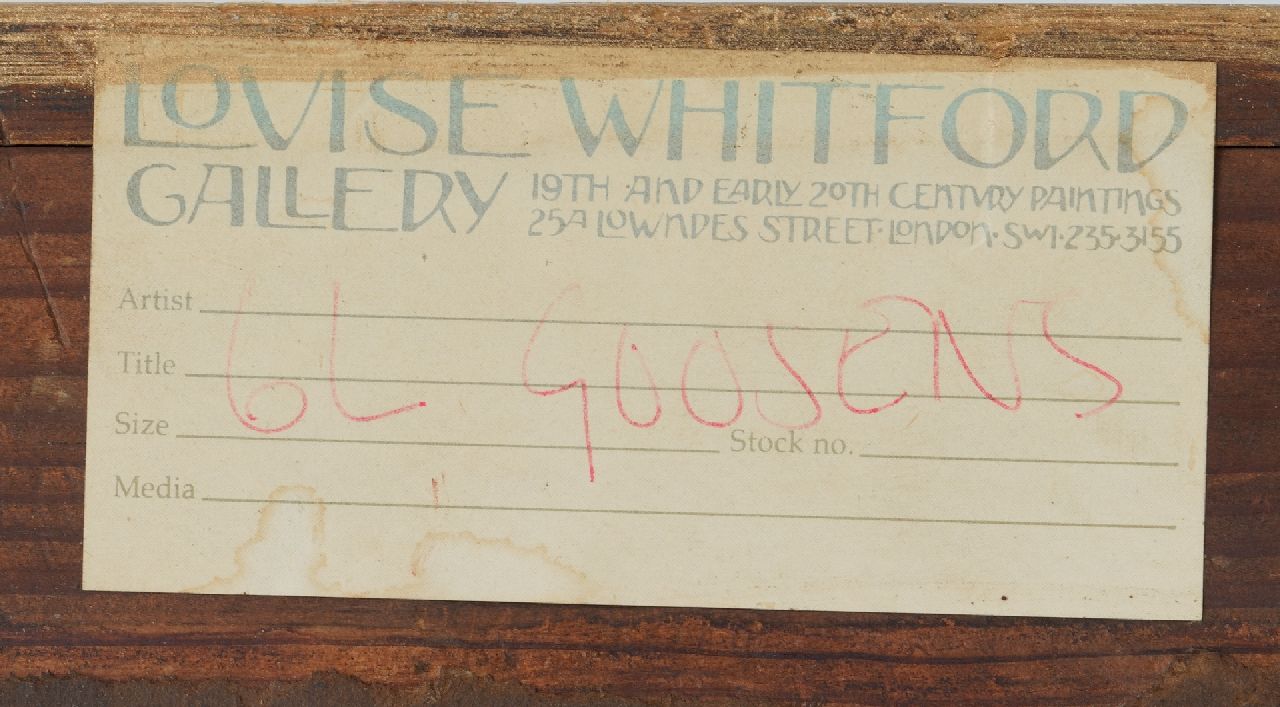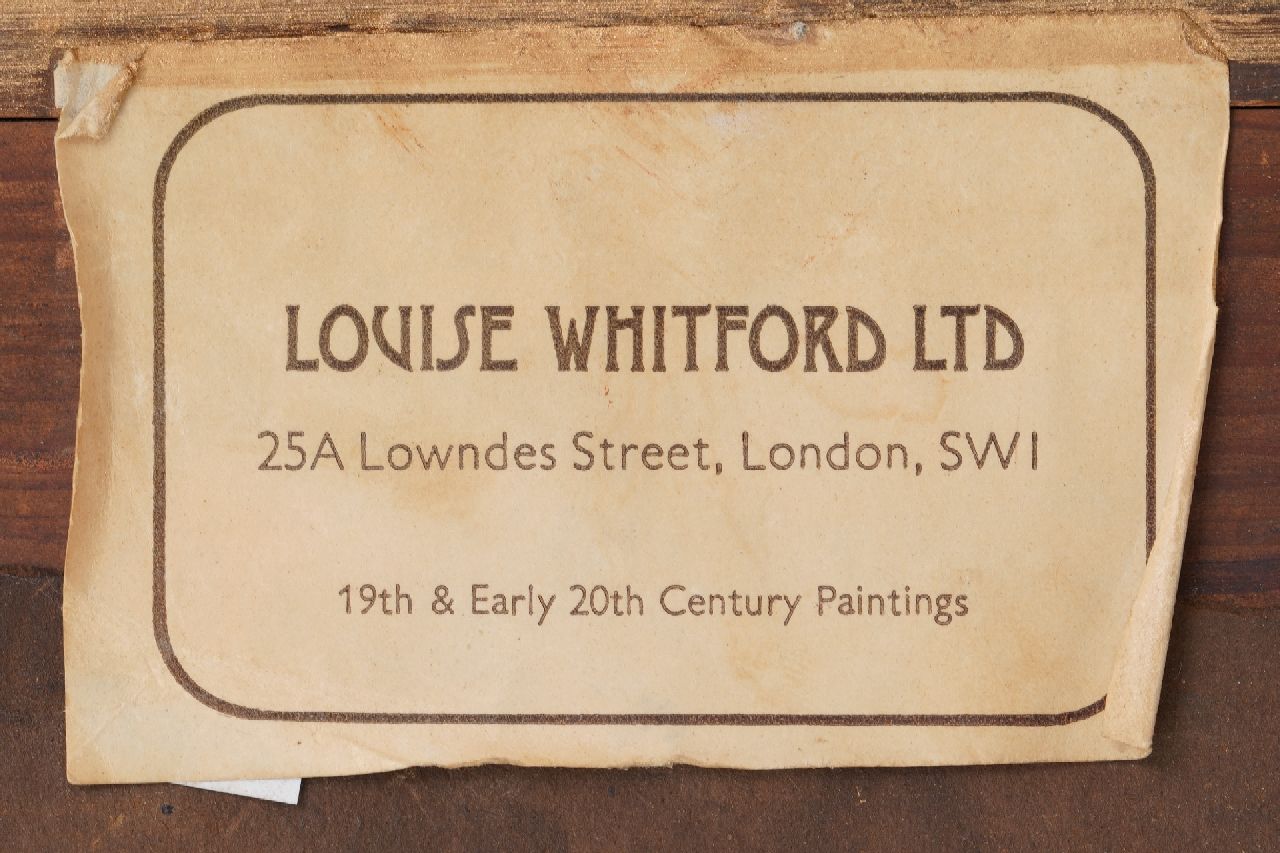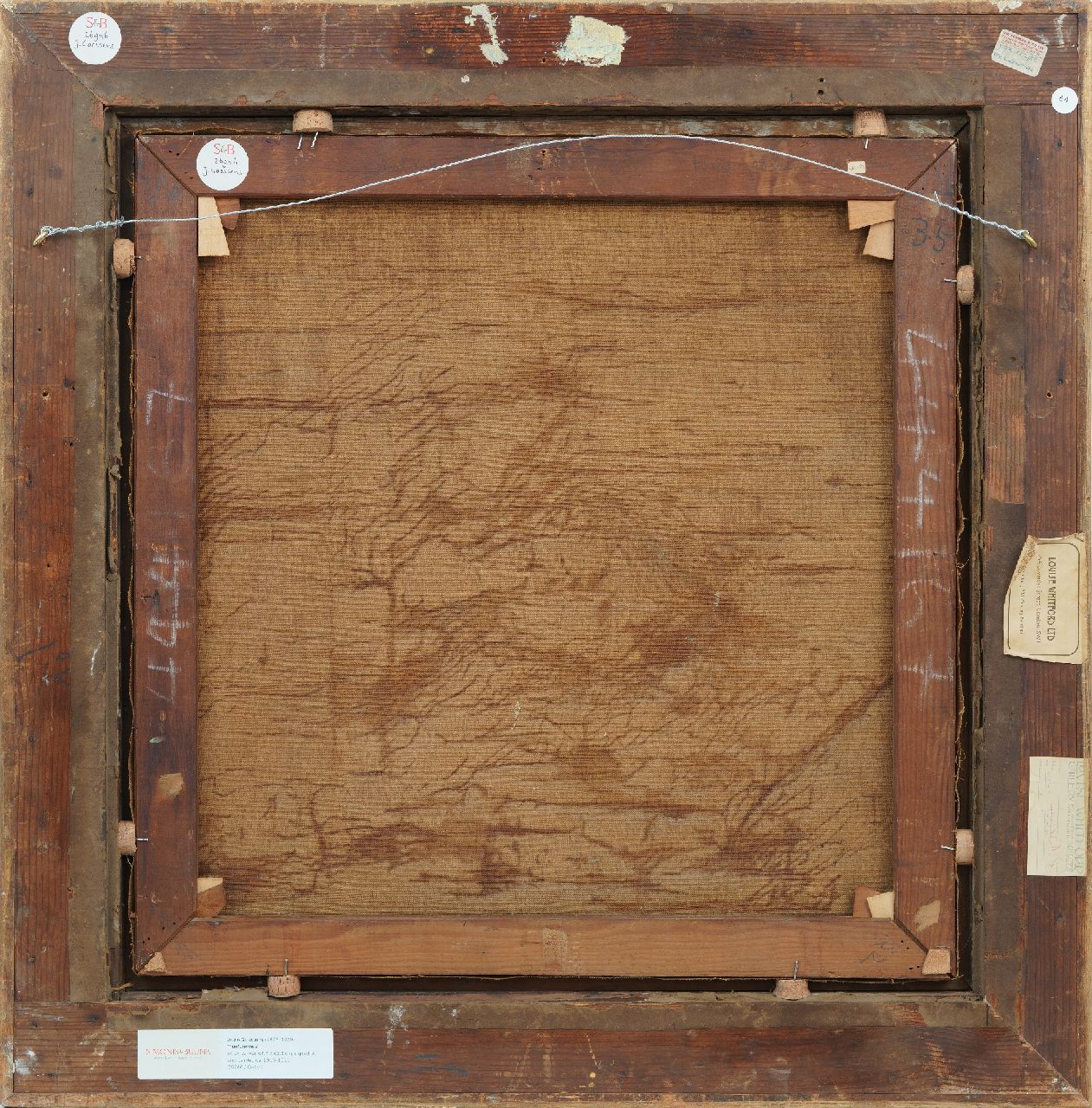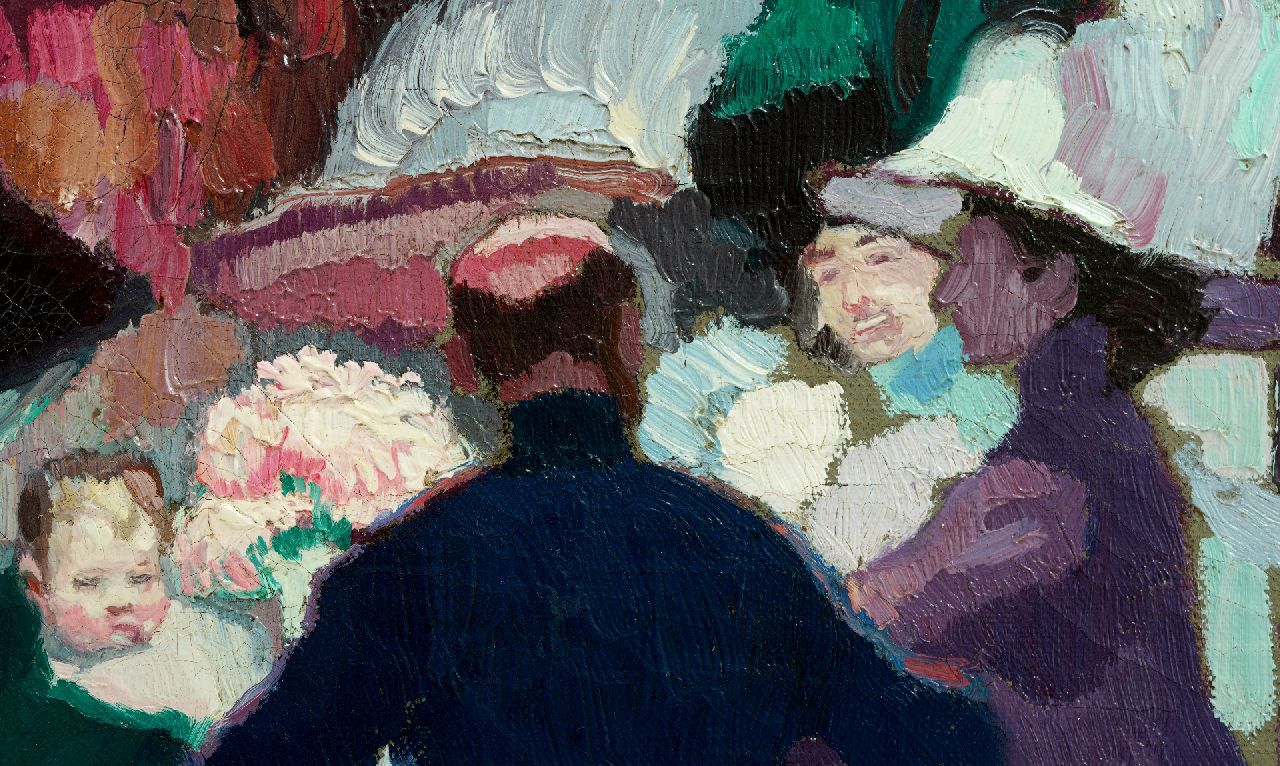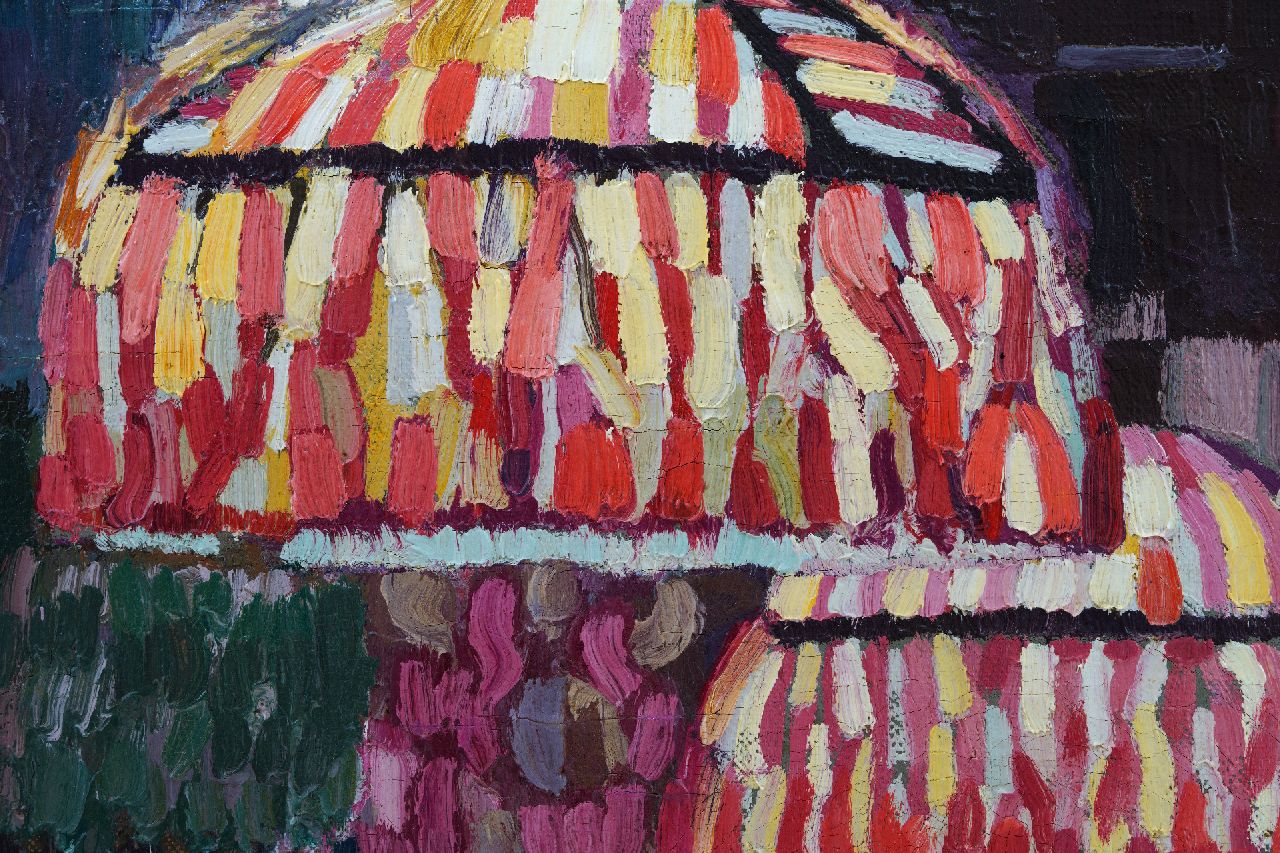Josse Goossens artwork • painting • previously for sale In the tea room
Josse Goossens
Aken (Duitsland) 1876-1929 Regensburg (Duitsland)
1876-1929
In the tea room
oil on canvas 64.4 x 63.1 cm, signed l.r. and painted ca. 1910-1911
This painting was previously for sale.
Josse Goossens was born in Aachen in 1876 and received painting lessons as a child from the Aachen painter Peter Bücken. He then studied at the Academy of Düsseldorf with, among others, the history painter Arthur Kampf. Under his influence, Goossens began his painting career with historical scenes and became known early on with decorative murals that he made on commission for both private individuals and public institutions. From around 1905 he developed his own, more impressionistic style that increasingly deviated from the academic painting style that he had used until then. In 1910-1911 Goossens moved to Munich, where he was a member of the Munich Secession from 1914 on. This artists' association was founded in 1892 by a group of progressive artists who could no longer agree with the conservative policy of the existing artists' associations in Munich. Goossens then focused mainly on the style of the Art Nouveau movement. His subjects also changed. He focuses on the entertainment of the common people, the cheerful moments of everyday life – processions, fairs and circus performances. In addition, he paints tea concerts, dinner dances and lunchroom scenes, which give an impression of the social life of the well-to-do class. He does this with broad brushstrokes in colours such as green-blue and purple-pink, which produces a mosaic-like effect. Goossens would continue to live and work in Munich for the rest of his life. In 1925 he was appointed professor at the Academy of that city.

